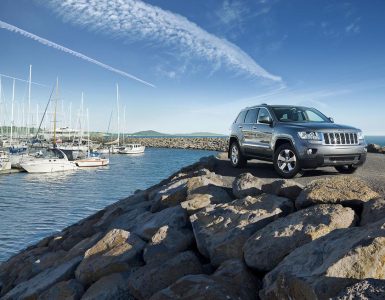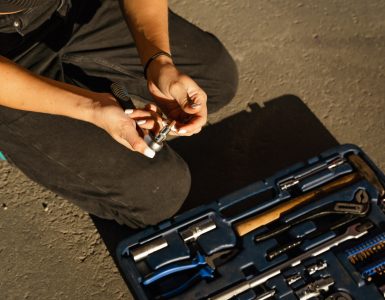Riding a motorcycle or a bike is a very exciting and enjoyable experience for both genders. Riding a bicycle is a skill that develops gradually and takes a long time to master. However, we need to learn to operate a motorcycle easily with proper care and supervision. There are a lot of rules and regulations to be strictly observed before and while riding a motorcycle to avoid accidents despite being a beginner or expert. These instructions are intended to provide you with a step-by-step guide on how to ride a bike.
Also Read: Best 8 Motorcycle TV Shows
Step 1: HOW TO PREPARE
Riding a bike without the proper protective equipment can be extremely dangerous and can lead to injury and even death. The types of safety equipment are:
- Head protector
- Coat / jackets.
- Gloves
- Pants
- Boots
Generally, people travel with boots, a head protector, and gloves. Bicycle coats are classified into three classifications: leather, material, and work. Leather coats offer the best scratch safety but are flashier and less pleasant. Work coats offer the least security, are the coolest, and often the most enjoyable, while Material coats have both qualities. Motorcycle coats are in contrast to standard coats as they are padded to protect against the effect and scraped area. It contains cushions or pads on the back/spine, shoulders, elbows, and forearms that prevent your body from having full power during the crash. Which coat to wear depends on your riding style, individual inclination, and the climatic conditions in your region. The use of boots is very important. You cannot remain barefoot or wear other types of footwear, sandals, as it may cause fractures or injuries during landing.
Step 2: UNDERSTAND THE MOTOR CYCLE
Before you can ride a bike you have to learn the controls. The left half of the bike is for controlling the gears and the right side of the bike is for controlling the speed increase and deceleration. The most ideal approach to increasing understanding of the controls is to sit on the bike and give a boost. Jumping on a bike is less demanding as long as it is done from the left side, as it then leans towards you. When you sit on a bicycle, you must ride in the depressed point of the gas tank. The bikes have the following controls:
Also Read: Nada Motorcycle to Check The Value of your Motorcycle
- Kick Stand helps support the bike when not riding.
- Start Switch starts the bike.
- Horn for blowing sound
- The front brake switch helps control the front brake.
- The rear brake pedal controls the rear brake.
- The choke controls the choke.
- The Motor Off button cuts the motor and is useful in case of crisis.
- The blinkers turn the blinkers left and right
- The clutch lever separates the power from the rear tire.
- The gear changer changes between gears, moving one gear up or down at a time.
- The high/low axis switch changes the beam from the high beam.
- Hazard lights turn on hazard lights
Step 3: PREPARE TO RIDE THE MOTOR BIKE
Shifting gears on a bike is completely different from a manual vehicle. On a bike you have two options, go up or down. Most bikes have a five-gear setting, one below neutral and five above neutral. Every time you change gears, you should let the gear shift to its normal position, which is neutral. To ride the motorcycle, shift your weight onto your left leg, at that point kick your right leg back, and then onto the bike. Remember to lift your leg high, or it may be caught before reaching the opposite side of the bike. When you are riding the bike, stop and familiarize yourself with the bike’s controls. Note the position of the foot stake and the area of the flashers, horn, and lights. Make sure your mirrors are in place so you can see vehicles perfectly while driving.
Step 4: START THE MOTORBIKE
While riding a bike, your right hand performs two functions, namely accelerating and braking. You apply the choke by twisting the grip toward you. Your correct hand also controls the front brakes. If you apply the pull, the front brakes lock and result in an accident. At the same time, your right foot controls the rear brake. In general, we apply the rear brake first which easily slows the bike down, and gradually apply the front brake are the best methods to stop.
The clutch is the only switch in front of the left handle. The moment you squeeze the clutch, the bike is in neutral. The moment you let go, you are connecting with the engine and transmission. Work on pulling the grip with your left hand gradually and you will have the option of engaging the gears more easily. Bike shifts are performed by moving a switch up or down with the left foot. A shift pattern resembles 6th gear, 5th gear, 4th gear, 3rd gear, 2nd gear, neutral, and then 1st gear. Now that you’ve found all the segments on your bike and neutral, it’s time to get started. First, turn the engine off button to the “on” position. Then lift the kickstand with your left foot. Hold down the start switch and finally hand over the start switch once the bike has started.
Step 5: RIDING AND CONTROL STEERING
Warming up a bike is a vital habit, especially when starting a bike, ensuring that the engine gives smooth and constant force during start-up. It should heat for about 30 seconds to a few minutes. Then close the bracket and you are ready to go. The stand is basically of two types: the center stands that are mounted under the bike require the bike to move forward. And the side stand is present on the left side which is for an emergency landing. Since you have audited all the media on how to ride a bike, it is an ideal opportunity to take off. Pull out the grip switch, press the shift lever down to gear initially, release the grip gradually, and gently bend the choke. As the bike builds forward force, it leans on the stakes. You must know how to guide your bike. If you need to turn right, you will have to lean slightly to the side while pushing the correct grip away. Turning is actually simpler to do than to portray, so pay attention to your instincts when cycling. Make sure to start gradually. Finding out how to ride a fitness bike takes a lot of energy and practice.





Add comment